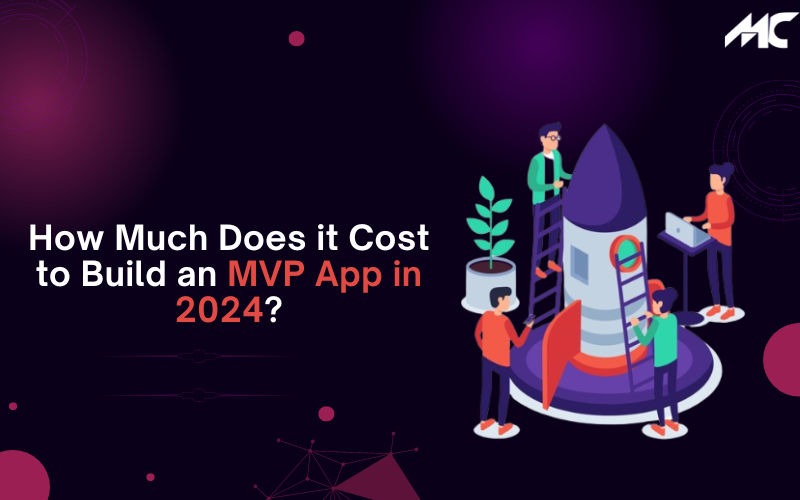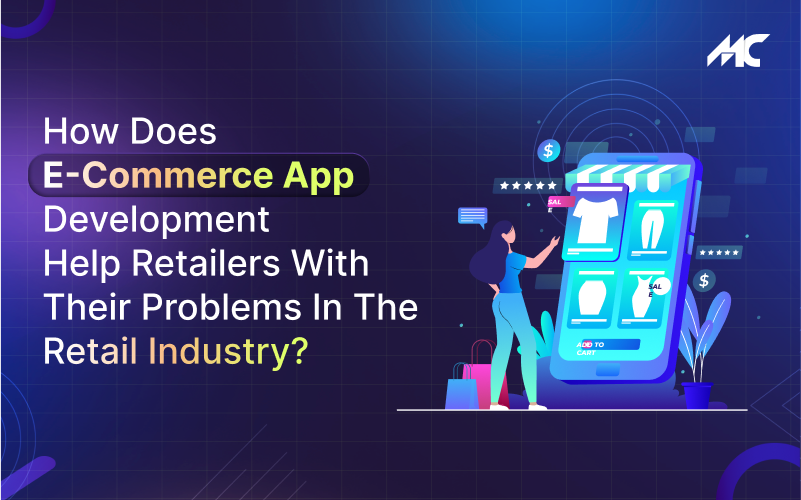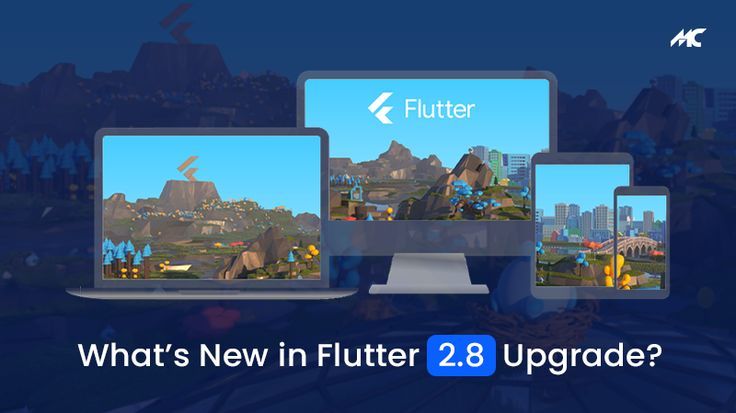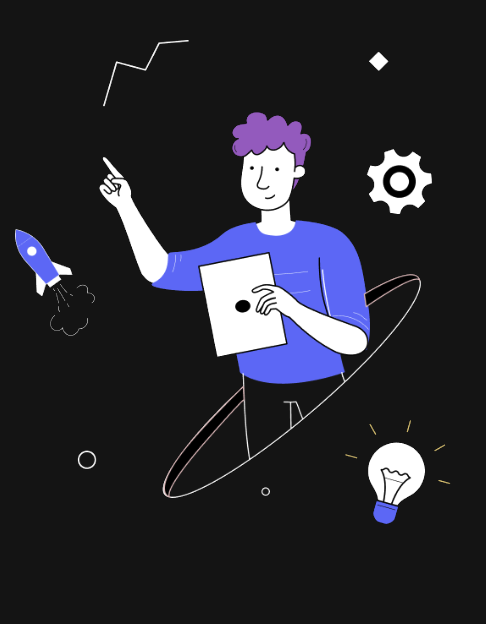What’s New in Flutter 2.8 Upgrade?
Flutter 2.8 is the most recent upgrade to Google’s widely hybrid app development suite. It includes an automatic speed boost along with brand new functions to support Dart.
If you’ve never tried it, Flutter is an application development platform that lets you create applications to run on Android, iOS, Windows, and more. It uses the same source code. Since the release of Flutter 2, the program has seen an incredible increase in popularity. Google lists 375,000 Flutter applications in the Play Store & more than half of them have launched in May.
Recently, Flutter got upgraded to the Flutter 2.8 version. The team focused on enhancing the performance of apps running on mobile devices. If you upgrade to Flutter 2.8, you’ll get many improvements. Your apps will run faster and consume less memory. Google is investing heavily in the improvements to Flutter. Many of their most popular apps such as Google Pay and Stadia are designed on it.
Introducing Flutter 2.8!
Flutter is a mobile desktop, web, and mobile development platform using the same SDK. Developers can concentrate on the things they need to build. It also eliminates the hassle of choosing a platform for developing apps. Flutter is a high-performance framework with high productivity. Through one code base, developers are able to target different platforms to develop apps. But what’s new with the Flutter 2.8 version? New Updates, Flame Game Development, Web View Platform 3.0, Flutter Tools updates, and more!
New Updates, New Flutter
The biggest improvement Flutter app developers have brought is reduced startup latency. The improvements were tested against Google Play. According to Chris Sells, the app performed 50% better on low-end Android devices and 10% better on high-end devices.
👋💙 Hello and welcome to Flutter 2.8!
🚗 Performance improvements
🔥 New @Firebase features
🖥 Desktop status
✨ Tooling updates
👀 And MORE!Read the blog by @csells 👉 https://t.co/QDhRck0DJv pic.twitter.com/FdEuZIqjxa
— Flutter (@FlutterDev) December 9, 2021
The Flutter apps will therefore start faster and use less memory than before, which will improve their performance.
1. Flame Game Development
A majority of developers believe that Flutter is only to develop apps. But, there are many developers developing games using Flutter. Flutter developers from various communities are benefiting from the graphics acceleration capabilities provided by Flutter.
Flutter has announced the release of Flame 1.0, a 2D gaming engine. Flame offers everything you need to make your game fast. It also comes with an element system with animated sprites and images collision detection, as well as many other features.
Development teams can enhance Flame with other packages by integrating other libraries. For instance, you could join Flame with other packages like Rive Forge2D, Rive, Fire Atlas etc. This combination can offer a solution that can be used for 2D gaming development. If you’re interested in developing games consider checking out Flame.
2. Web View Platform 3.0
The latest release also enhanced the performance of the platform views in Flutter web. Flutter web app allows this to be done through HtmlElementView widget. This widget lets you host HTML elements within your Flutter web app. Users use platform views by default if they utilize Google Maps’ Flutter web version plugin.
In the earlier version, the canvas is created when you add the view of platforms. Additionally, a new canvas is added every time you embed an element to the view platform. These additional canvases cost money to produce because each one is larger than the entire window. This update reuses canvases that were made for earlier platform views. This means that instead of suffering the expense of 60x each second, you are able to bear only once. This implies that your web app could have several HtmlElementView instances, without affecting performance.
Webview_flutter provides a range of popular features in Flutter web app:
- Support for POST and GET to populate content (4450 4479, 4480 4573, 4479, 4450)
- Loading HTML from strings and files (4446 4446, 4486, 4558)
- Background support (3431 4569, 3531, 3531)
- Cookies are written before loading the content (4555, 4556, and 4557)
3. Dart 2.15 Incorporation
With Flutter 2.8 on board came the incorporation of Dart 2.15 on 8th December, 2021. Call it a successful attempt and quite feasible. Beyond all this, Dart 2.15 introduces “constructor tear-offs”. It allows you to call a class’s constructor by name in cases like “forEach()” as well as “map ()”. Based upon the nature of the application’s code, this may be particularly useful for the development of Flutter UI.
In addition, Google is also taking time to announce their partnership with Flame. It is a game engine built upon Flutter & has reached 1.0 stable version as of today. Flame is fully ready for 2D games, fully with game loops and the necessary tools to support animation, and mapping.
4. DartPad Improvements
There are also improvements to DartPad. The biggest improvement is the support for a large number of packages. Flutter 2.8 Dartpad has 23 packages that are available to import. This list includes packages like block characters collection, google_fonts and more. It is expected that the DartPad team will keep adding new packages.
There’s a third DartPad feature that’s pretty great. As of now, the most recent stable version is always available on DartPad. With such an upgrade, you will be able to access the New Channel menu from the status bar. You can choose the most recent beta channel release as well as the stable version prior to it.
5. Flutter DevTools
To identify problems with performance, this edition of DevTools comes with a feature called “Enhance Tracing” feature. This aids in diagnosing UI issues that result from costly layout, build and paint operations. When these tracing features are activated, the Timeline contains the latest events of widgets laid out in the appropriate manner.
Additionally, this version of DevTools also includes new functionality to analyze the speed of an application’s start-up. The profile includes CPU tests of the Dart VM to the point that the first Flutter app development frame is rendered. Once you have pressed the “Profile app startup” button, and the app startup profile is loaded. You will notice you have the “AppStartUp” users tag chosen for the profile. You can also download the app startup profile by choosing the user tag filter. By selecting this tag, you can view the profile information for the app’s start-up.
6. Firebase with DartPad
With the introduction of FlutterFire, Flutter developers are able to access Firebase directly from within DartPad. DartPad’s Firebase support is available with the core API and authentication as well as Firestore. Another benefit FlutterFire support allows for DartPad is the ability to embed versions of DartPad directly within your documents.
7. Flutter Ads General Availability
This general release for the Google Mobile SDK for Flutter app development came in November. This version supports five different ad formats and includes the support of the two formats, AdMob & Ad Manager. It comes with an early version of a dynamic mediation tool that assists in optimizing the performance of ads.
8. Document Mapping/Firestore Object
Not to be left out is the Firestore-based Object/ Document Mapper. It is a new feature that you need to know about the integration between Firebase and Flutter app development. Firestore ODM boosts Flutter developers’ productivity and efficiency. It reduces how they use Firestore using the familiar types of structured and type-safe techniques and objects.
Through code generation, Firestore ODM improves the syntax of working with collections and documents. Moreover, it allows users to model data in a safe manner. The ODM can also support subcollections that are strongly typed. Also, it has built-in options to optimize widget rebuilds by using specific options.
In A Nutshell
Flutter 2.8 is focused on making it simpler to connect apps to backend services such as Google’s Firebase. In this regard, all of the Firebase plugins for Flutter have changed to “Beta” and “Stable”. Additionally there’s an official, simple-to-use application for signing in to apps using Firebase Authentication. This covers the various edges, which will aid Flutter developers in saving time and improving security.
Like most times in the past, this most recent Flutter update comes with an update of Dart. The Dart programming language SDK is now at Flutter version 2.15. A few of the previously mentioned improvements in performance are due to this update. This means users using Dart in addition to Flutter will notice some enhancements too.
With this advanced Flutter app development version 2.8 on board, we must not ignore the hard work of the Flutter team. We, at MobileCoderz, express our sincere thanks to all for building this ultimate version. As 2021 is on to a close, let Flutter 2.8 dominate 2022. For any more queries, MobileCoderz is waiting for you to prosper in 2022 and the coming years.
-

 How Much Does it Cost to Build an MVP App in 2024?
How Much Does it Cost to Build an MVP App in 2024? -

 How Does E-Commerce App Development Help Retailers With Their Problems in the Retail Industry?
How Does E-Commerce App Development Help Retailers With Their Problems in the Retail Industry? -

 How AI is Changing the Landscape of the Online Food Delivery Industry?
How AI is Changing the Landscape of the Online Food Delivery Industry?




